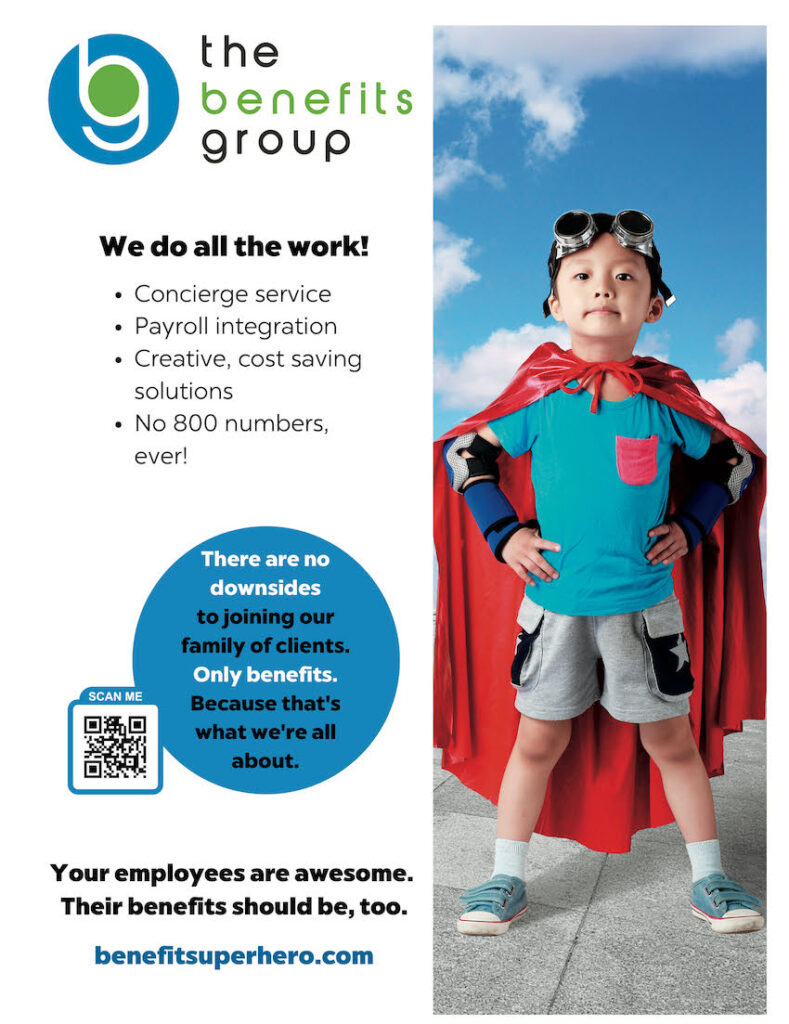
Everyone knows offering a robust benefits package can attract and retain top talent. That’s been drilled into us for years. But the reality is cost and creativity often get in the way. So, let’s cut to the chase—while it’s good to be on-trend with creative fads in HR, what matters most is creating a foundational offering that doesn’t just look good but provides genuine value and cost savings.
It’s not about trends; it’s about controlling coststo create the most desired benefits for your team.
Stop looking for a “one-size-fits-all” health insurance solution. Thanks to cost-varying factors such as employee demographics, changing conditions, multiple product levers, and your state, it doesn’t exist. There’s also no guarantee of “hands-off” benefits. The right option may include a combination of effort from you, your employees, and your broker—but this is not too much to ask from:
• HR professionals who love what they do
• Quality employees who value loyalty
• Brokers who thrive on finding unique solutions.
“Okay, but Will—what kind of effort are we talking about?”
Good question. Let’s look at a few options requiring a little effort for some big payoffs.
Could you save more with a level-funded plan? Level-funded plans (a form of self-funding without the liability) take more work on the front end. There are health questionnaires. Then you factor in locking in finalized quotes for enrollees—all before they actually enroll. It can feel like trying to hit a moving target, BUT it can save 20 to 40 percent on premiums!
Could you save more with reference-based pricing? What about reference-based pricing? Many brokers will tell you, “Don’t do it!” but this is likely because they don’t want to explain it, or they may not understand it. When you break it down, reference-based pricing: 1) standardizes rates, 3) removes networks, so you go anywhere you want, and 3) limits exposure to only what the plan pays. And what’s the punctuation mark? Premiums that run up to 50 percent less. But this approach takes education on the front end and requires employees to understand the plan.
Hey, saving ain’t easy!
Which benefits are ideal for young adults? Other plans exist that limit the benefit to 1) a defined amount or 2) a specific number of visits. While that may not be for everyone, it may be perfect for young, healthy employees who recently rolled off a parent or guardian plan and are new to benefits.
How vital is out-of-network coverage? Then, you must consider the levers driving the costs, such as in-and-out-of-network costs. Large provider networks offer Exclusive Provider Organizations (EPOS) with NO out-of-network benefits. But if you have a large enough national carrier, that’s generally not a concern. Thanks to the Affordable Care Act, emergency treatment is always considered in-network. And the need for out-of-network providers remains limited thanks to the recently enacted No Surprises Act (NSA). Maybe it’s not worth the extra premium, or maybe it is. Either way, you deserve the opportunity to consider it.
Do you really need multi-tiered pharmacy benefits? The right broker will also help you consider whether to pay for robust pharmacy benefits and multi-tier copays when your employees may not utilize expensive drugs.
How are your broker’s math skills? Additionally, many employers and employees would not “buy down” their deductible if they knew the true cost of that deal. Some plans require more in premium dollars than you save in decreased deductible. For example:
Your plan has a $2,500 deductible, but your employees say they want a smaller one. The new $1,000 deductible plan costs $200 more monthly ($2,400 annually) in additional premiums. So, you “saved” $1,500 worth of deductible but now pay $2,400 more annually. That’s a lousy deal.
Sticking with the higher premium could make more sense. Then give employees a chance to contribute to an HSA or HRA account to make the deductible “feel” lower. The right fiduciaries can help you set up HSA and even 401k plans for a few dollars per employee per month, and the setup and administration are easy.
Are you offering telehealth? Telemedicine is an increasingly sought-after benefit, and you need to be offering it. Can your employees get a real doctor on the phone or video chat from the privacy of their home for any healthcare or mental health concern?
Are you offering learning management tools? Additionally, there are learning management tools that your employees could be interested in using. Personal enrichment and educational/technical advancement programs are becoming more sought after as our workforce transitions to a millennial-heavy demographic.
Are you leveraging the halo effect? Even if you don’t have a lot of employee participation in the first year or two of setting up a new plan, the “halo effect” eventually takes effect, where employer perception increases and, by extension, your team members’ loyalty to you. Your team can tell when you put in the effort to make them feel valued—and by nature, human beings are loyal to those who appreciate them (and don’t just say it but prove it).
Most brokers present generic, prepackaged offerings that look okay until you start poking around under the hood. So, the benefits sit on the proverbial shelf, underutilized and overpriced. But you have so many options when you work with the right broker. You CAN offer Fortune 500 benefits, be a superstar, and attract and retain top talent. You simply need the correct partner.
If nothing else, I hope you feel ready to ask your broker some new questions and understand that you have FAR more options than you realize. I’d love to show you what creative and valuable solutions The Benefits Group can provide. Let’s talk about curating the best plan for your team at: www.thebenefits.group
